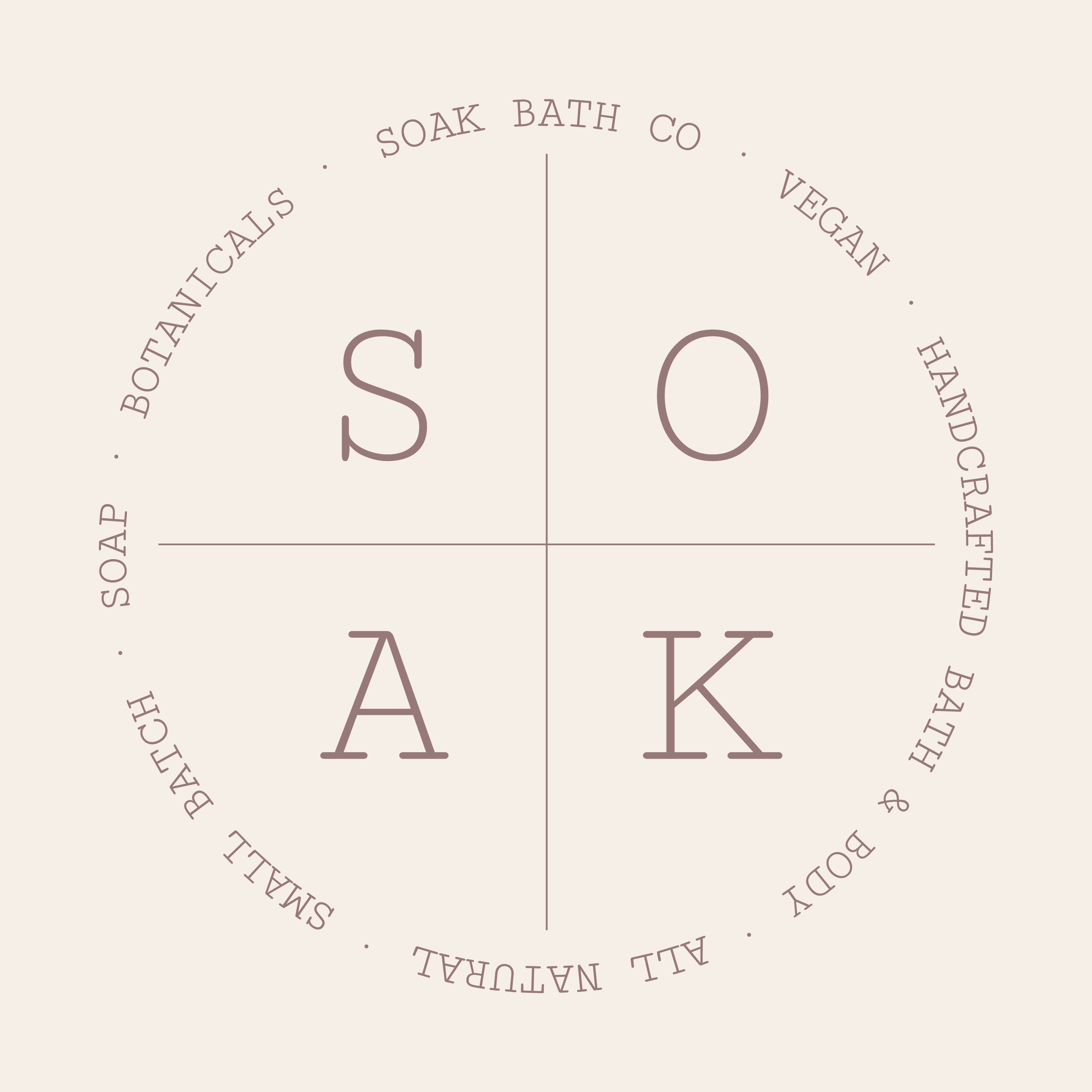Do you ever wonder what the PH level of a soap bar should be?! Didn't think so! But we wanted to share some of the nerdy science side of our soap making process here today!
In the soap making world, there are four main types of soap making processes
- Cold Process
- Hot Process
- Melt and Pour
- Rebatch
What we do here at SOAK Bath Co is we use the cold process method of soap making for our signature line of soap bars. It refers to the way that we combine our oils, butters and lye water mixture to initially make the soap batter. It's part of what gives our soap bars their signature look. You can shop our signature soap bar collection here. The cold process soap method allows us to combine those oils and butters with scent and colour options to achieve various swirling techniques and colour combinations. It gives us more flexibility to be creative with the overall design of the soap bar. The Cold process saponification process can make it really tough for scents to last. Shortly after pouring the soap batter into their molds, the soap batter can heat up to 130 degrees Fahrenheit for the following hours after pouring. This heat has the ability to extinguish scents and change the colour of any botanicals, seed powders, root powders that we've mixed into the soap. We're never really sure what a new scent and colour combination will bring due to the changes that can occur in this part of the soap making process. Soap testing requires a lot of testing to ensure we have scent and colour combinations that can stand the test of time.
The second most common method of soap making is called hot process. Hot process requires that the oils, butters and lye water mixture be combined and then an external heat source is applied to that mixture. Starting soap makers can use something like a crock pot to put their mixture in and the crock pot heats everything up on the outside. This method generally produces a more rustic soap bar, it doesn't allow the creative freedom of colour swirling that the cold process method offers.
The melt and pour soap making method is what we use for our DIY Soap Making Kits. This is a pre made format of soap that can be melted down in the microwave or on a stove top, poured into a mold then have scent, colour and botanicals added to make a beautiful bar. This soap making method offers a lot of creative flexibility and is the least reactive than any of the other soap making methods. Meaning, it can take on a lot more colour variations and adapt to way more scent combinations than the other methods. There are many scents and colours that will not take to the cold process soap making method, which creates some limitations on what scent combinations we can produce for our signature soap collection. If you are looking for a fun activity to do at home with friends, kids and family, the melt and pour soap making process is the most user friendly, better yet our DIY Soap Making kits come with all the fixings you'll need for this activity!
Rebatch soap making is a fun one! Rebatch soap making allows us to take scrap pieces of cold process or hot process soap, melt them down and reform them into a whole new bar of soap. Rebatch soap making is a way for us to repurpose what would otherwise be deemed as soap waste and turn it into a fully usable soap bar. We have created a few Rebatch soap bars but they are few and far between as we have to wait until we mess up a batch of our signature soap bars. Rebatch soap making allows us to use scents that we may not normally use in cold process. The reason being the scent is less likely to be extinguished in Rebatch soap versus the saponification process that occurs in cold process.
Let's talk about PH! The PH scale measures how acidic or basic a substance is. Are you getting flashbacks to high school Chemistry class?! The PH scale ranges from 0 to 14 with a PH level of 7 being considered neutral. To give some context a 0 - the most acidic - would be the PH value for battery acid while a 14, the highest value for alkaline are standard in commercial cleaning products like ammonia.
Handmade soap bars tend to land within a range of 8 to 10 on the PH scale, here at SOAK our recipe creates a bar that sits closer to 8. Why does this matter? Keeping our PH level at an 8 allows our soap bar to be more moisturising. In testing bars like Zest, Irish Spring, Ivory their PH levels land at between 10 and 11. What this does is it often is more drying to the skin and is more prone to cause skin irritations. So if you ever wonder why we can achieve such a moisturising soap bar. It has everything to do with our recipe, the ingredients we use and the ratios of the ingredients that we use!
Shop our cold process, signature soap line: Soap Bar Collection
Shop our DIY Soap Making kits: DIY Soap Making Kits

